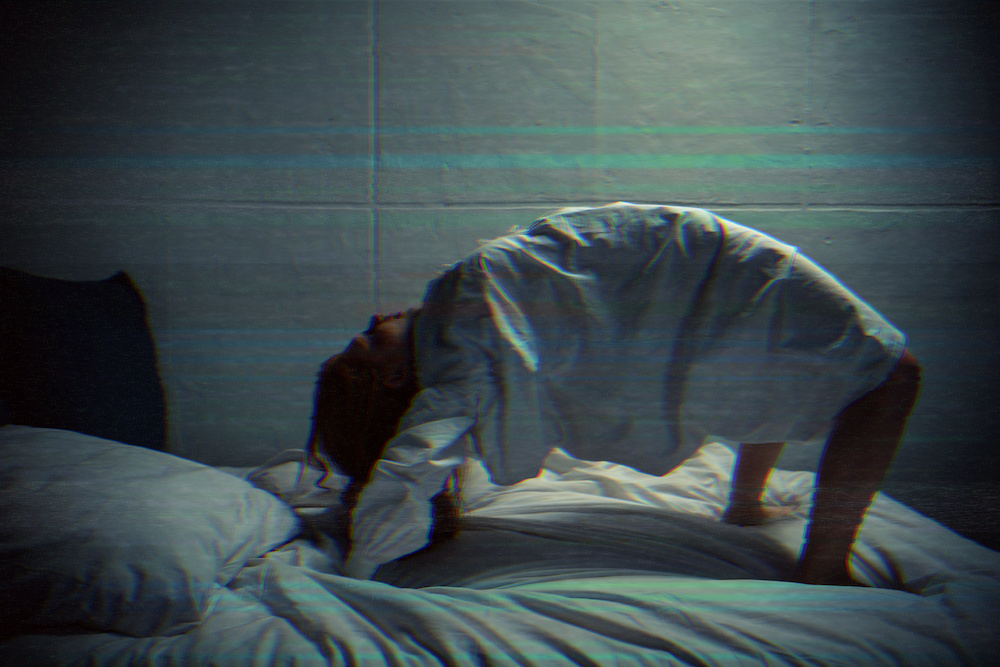Exorcism: The history of purging demons, from the New Testament to today

- Exorcisms are mentioned frequently in the New Testament, and some gospels imply that Jesus became famous first and foremost as an exorcist.
- The Christian Church has a long, bizarre, and often dangerous history of exorcism, and there are various commonalities over time.
- As the Catholic Church agrees, the mentally ill are not possessed, and demons do not cause epilepsy, depression, or schizophrenia. To argue otherwise is dangerous and immoral.
Imagine it is a regular Sunday morning. You’re at your kitchen table, chomping through some toast, drinking coffee, and watching TV. Suddenly your fingers twitch. Your mug shatters on the floor. Your body tenses and goes cold.
“IT’S TIME TO KILL!” a gravelly, rumbling voice pounds through your head. “THE PORTENTS ARE DELIVERED. THE SEALS ARE BROKEN. THE HOUR IS HERE, MORTAL!”
The moment passes as quickly as it came. You feel exhausted to your bones and you sit there, mute and frozen in panic. What just happened? The black sludge of your coffee pools around your bare foot, and you reach for your phone. Luckily, you’re a god-fearing member of your church and you have the priest’s number saved. After a few rings, he answers.
“Father, I think I’m possessed. I need you to exorcize me,” you whisper.
He says he’ll be there shortly.
A history of demonic deliverance
Unlike some church doctrine, exorcism actually has a lot of biblical authority. In Mark’s gospel (generally considered the earliest gospel), Jesus performs his first miracle when he exorcises a spirt at a synagogue in Capernaum. For much of the gospel, the only ones who recognize Jesus’ power are demons. The gospels seem to imply that Jesus became famous as much for his exorcisms as his ministry. In fact, the Pharisees (the villains to Jesus’ hero) accused Jesus of being in league with “Beelzebub, the prince of demons” — to command demons so easily, he must himself be demonic, they thought.
At the time of the New Testament, illnesses were thought to be caused by demonic possession. This belief fed the burgeoning business of exorcism well into the mediaeval period. Hearing voices, having seizures, or being overcome by insatiable and uncontrollable urges might all be attributed to satanic influence. If a loved one had any kind of mental illness, you’d likely go to your priest over a physician. Richard Burton’s epic 1621 work The Anatomy of Melancholy goes into a huge digression about the varieties of demonic possession. In it, he mentions how devils and demons cause an entire compendium of mental illnesses, but also that anything — objects and animals included — can be possessed.
“As Agrippa’s dog had a devil tied to his collar; some think that Paracelsus had one confined to his sword pummel; others wear them in rings,” Burton wrote. (Quite amusingly, one emperor’s dead wife apparently had a demon confined to “the wart in her neck.”)
While the work of ancient (but pagan!) scholars like Hippocrates and Galen was still available in treating mental health, physicians simply didn’t know what to do, for the most part. Even in our post-Enlightenment and scientific age, we largely only treat or manage the symptoms of mental illness; we do not “cure” it. It’s no wonder, then, that people turned to their priests for help — it was the only option.
Your friendly neighborhood exorcist
In the gospels, exorcism is seen as a kind of extraordinary measure or treatment for the possessed. But as Christianity battled to become mainstream, exorcism took on a new purpose. In an effort to combat rival theologies and the sinful paganism of other cultures, exorcism came to be lumped together with the baptismal process. As early as the 3rd century, baptism was used as a way to convert heathens and rid them of any foreign, false religion’s demons.
But exorcisms for the possessed were still a huge part of the local clergy’s job description. Given this, it’s unsurprising that there were almost as many methods of exorcism as there were priests. However, there were a few noticeable trends.

The first is that water and salt are often used. A 12th-century manuscript features the use of salt and water with the following words (the cross represents the moment the priest must draw the sign of the cross): “I exorcise thee, creature of salt, by the living God +, by the true God +, by the Holy God +, by the God who by the prophet Eliseus commanded thee to be cast into the water.”
The second is that Biblical or canonical incantations are spoken. There were often certain prayers uttered: the Lord’s Prayer, Hail Marys, and so on. The Catholic Church still governs the rites and processes of exorcism from the 84-page document De Exorcismis et Supplicationibus Quibusdam, which can be bought online.
The third feature of exorcisms it that they involve some kind of sacred object or relic. Most often this will be the crucifix, but it might be some holy relic, or some otherwise blessed trinket that the exorcist has used to great success before.
So, you’ve been possessed by the devil
But what actually happens today if you’re to undergo an exorcism? Well, the first thing to note is that much will depend on who you go to and which Christian denomination you belong to. Methodists, Baptists, and Lutherans all have their exorcistic wings, but let’s assume you want a vanilla deliverance. You choose Catholic.
The Roman Catholic Church revised and updated their rites of exorcism in 1999. The Cardinal who oversaw this revision said it has “more sober language, with fewer adjectives than in the previous one. But the basic set-up is exactly the same.”
You, the possessed, are typically seated or laid down and will have prayers spoken, chanted, or sung over you. The priests or pastors present will be regularly making the sign of the cross, and holy water (and salt) will often be used. There is sometimes someone present who has the “gift of discernment” who will be able to see the presence of the demons (and also angels), who might be able to steer the rite. The priest will often lay hands on you as they say the requisite prayers.
Not harmless fun
The 1999 revision does make substantial efforts to say that exorcism should not be a substitute for medical help, and that possession is not the same as mental illness. “Exorcism is one thing, psychiatry another,” Cardinal Medina said. “If the exorcist has doubts about the sanity of a possessed person, he can consult a specialist. It can be a collaboration.”
But that does not mean that exorcism is always only a harmless placebo that you might as well try. In his book American Exorcism, Michael Cuneo offers accounts of women being pummeled to death in San Francisco and a Korean woman being trampled to death in Glendale during exorcisms. Most disturbingly, he describes how “a five-year-old Bronx girl died after her mother and grandmother forced her to drink a lethal cocktail containing ammonia, vinegar, and olive oil and then bound and gagged her with duct tape. The two women claimed that they were merely trying to poison a demon that had infested the little girl several days earlier.”
The fact is that while “official” Catholic exorcisms might be relatively harmless to believers, the business of unlicensed and unofficial exorcists risks exacerbating mental illness and disfiguring or even killing those they profess to help. The mentally ill are not possessed and demons do not cause epilepsy, depression, bipolar disorder, or voices to be heard. To argue otherwise is dangerous and cruel.
Jonny Thomson teaches philosophy in Oxford. He runs a popular Instagram account called Mini Philosophy (@philosophyminis). His first book is Mini Philosophy: A Small Book of Big Ideas.





